Admittedly iPhone App
Building an iOS app one step at a time.
Admittedly | iOS App | 2015
From Web to iOS
The Admittedly app, originally designed for desktop, is a digital guide that inspires and mentors students through the college application process. We worked with the team to find ways to make the daunting application process more enjoyable, informative and motivational, all while stimulating user retention and promoting paid conversions.
Retention and Conversions
To tackle user growth and retention concerns, we created two types of content; free and purchasable. Free weekly content was extremely valuable since it was the product's sole opportunity to convert users into paid customers. We decided to make free content as prominent as possible on the screen by displaying it above the fold and adding a brightly colored "Free this week" badge.
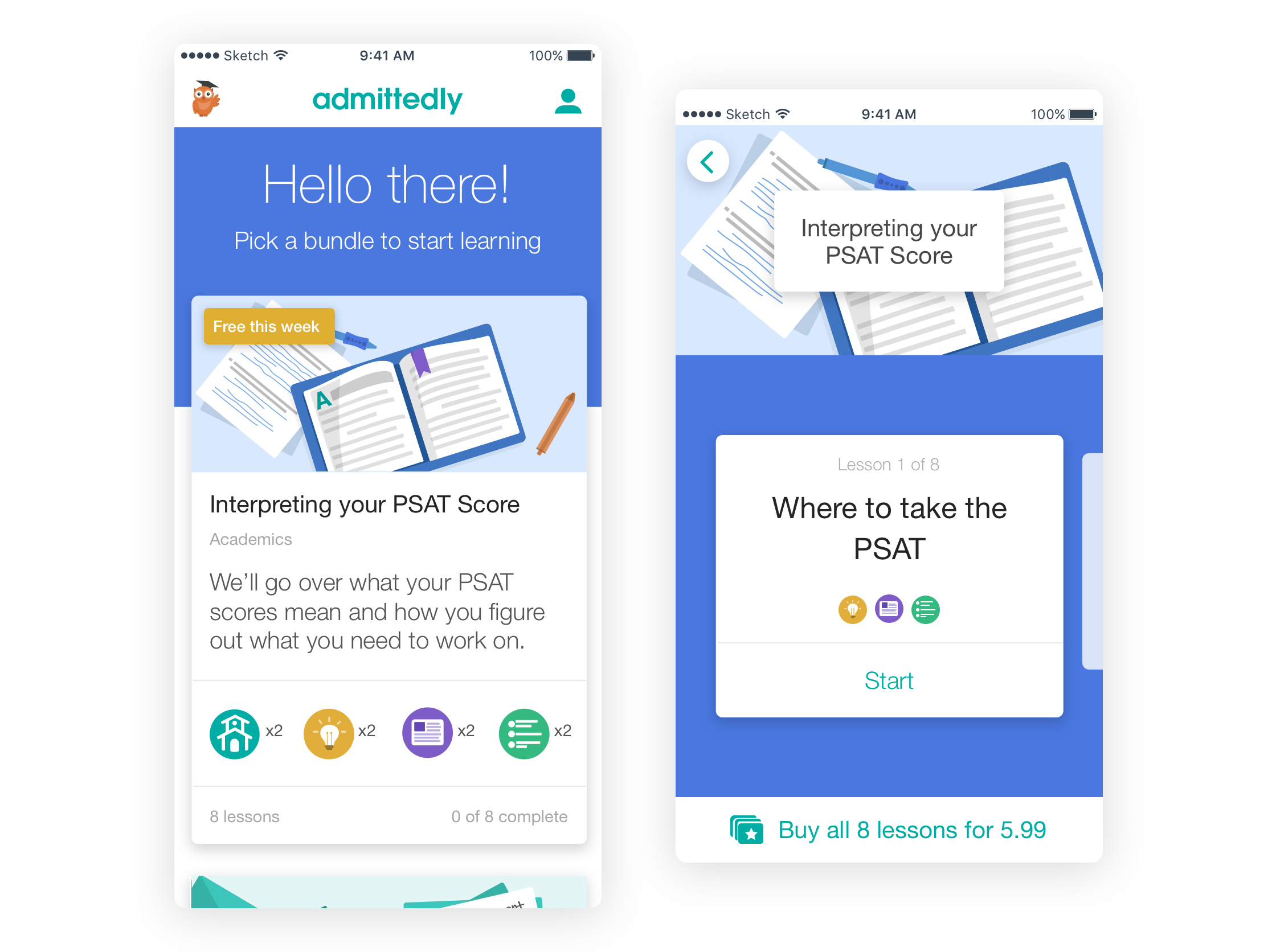
Using Design to Motivate
Nothing says "applying to college is fun" quite like a 1000+ page paperback book, right? College prep needed a makeover and a way to extrinsically motivate users. We felt the best way to do that was to use friendly, playful visuals. Some UI and visual patterns we designed to emphasize those ideals were rounded corners, saturated colors, and flat design.
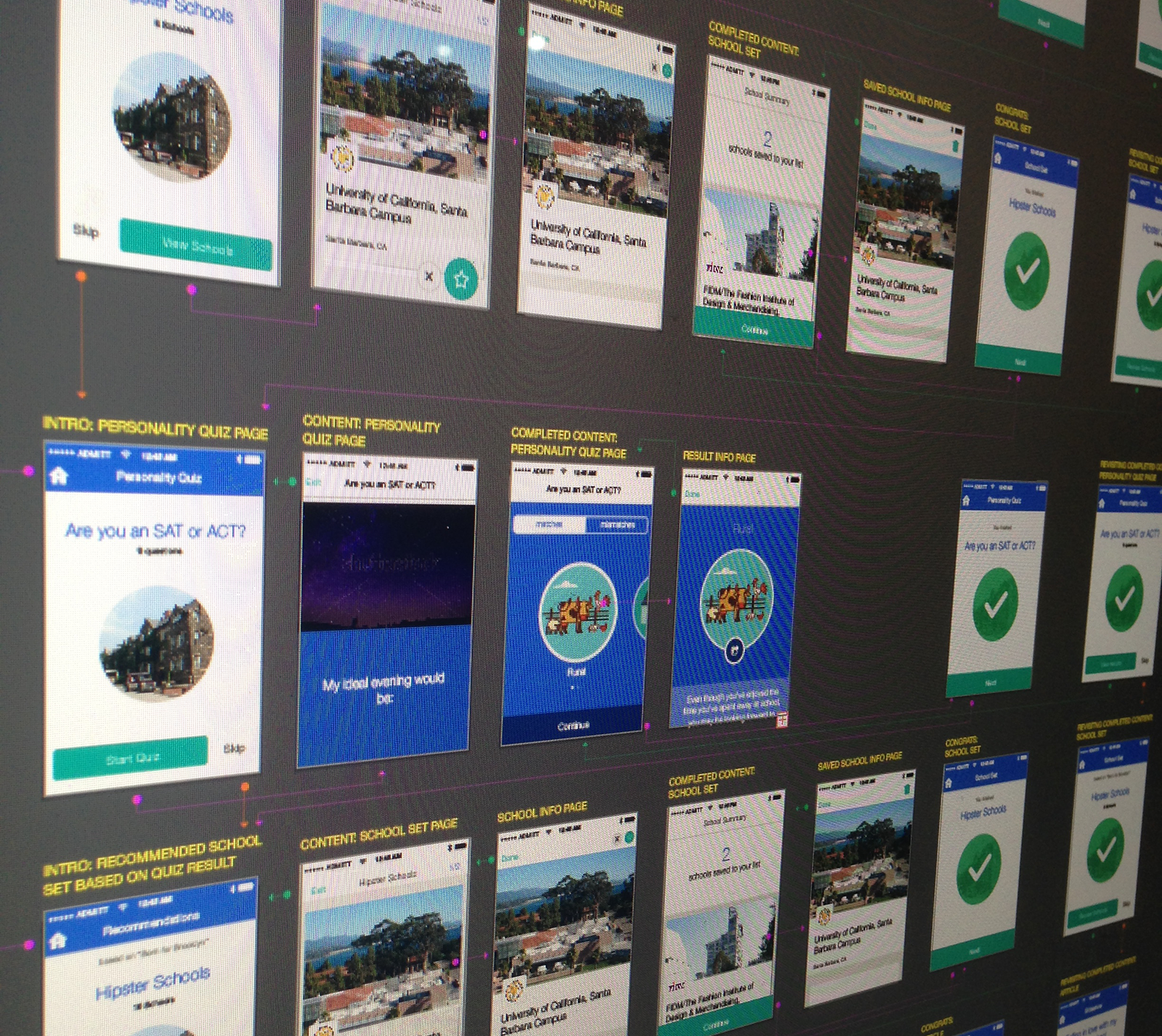
On-Demand College Guidance
Conversations with college counselors are extremely valuable so we wanted the flow of the app to mimic the same experience: Start with broad topics and end with personalized advice.
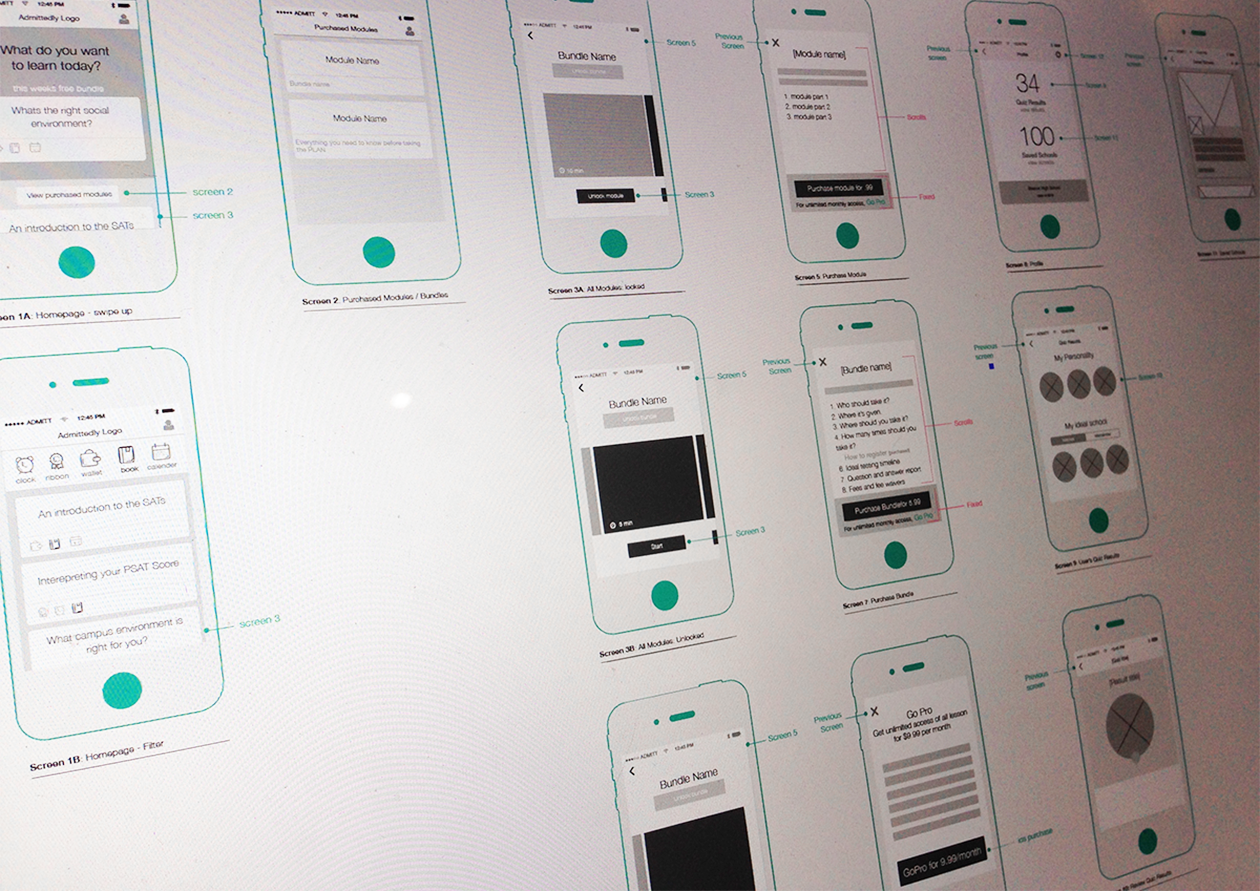
Curated Content from Experts
We decided to let the content influence the design: Lessons had bold background colors and large playful fonts; student articles had readable fonts with a thoughtful line-height; and personality quizzes used large images and fun interactions to make them engaging.
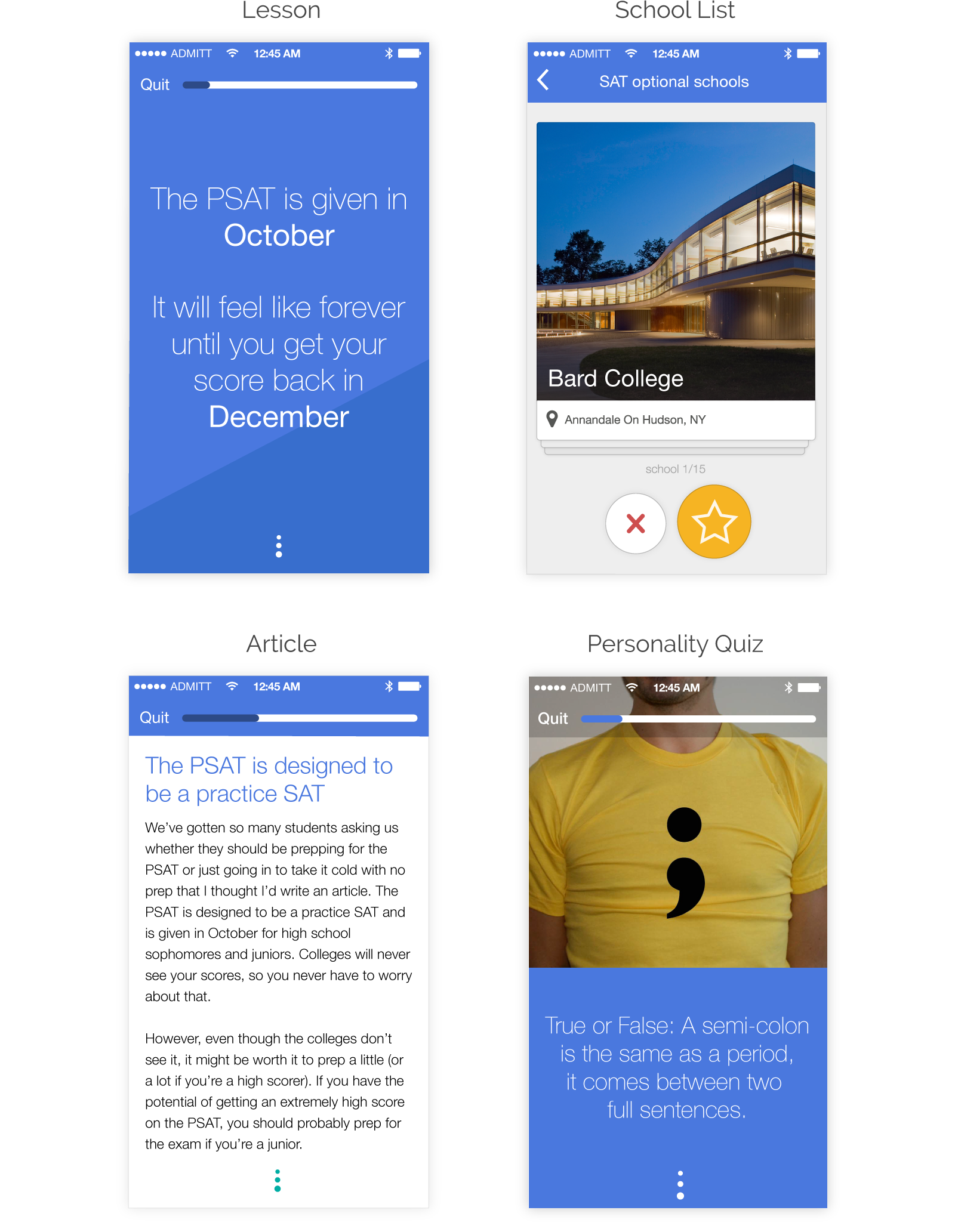
App Iterations
The iOS app was the first product we were involved in from concept to production at Admittedly. The process started with lots of brainstorming, coming up with problems and finding ways to fix them. Throughout the app's development, we introduced new features and styles through small releases to determine what engaged our users.
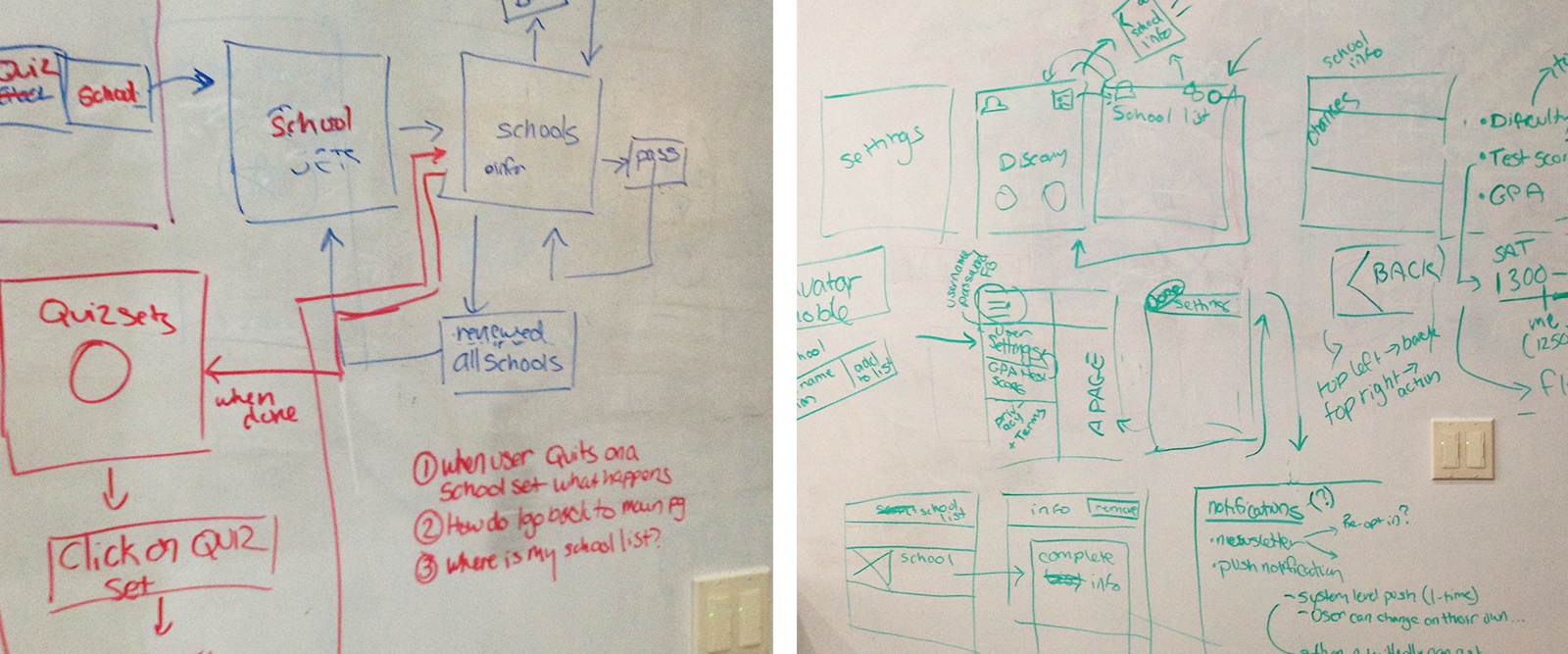
Finding the Value of Personality Quizzes
The first version of the app helped Admittedly determine if college applicants found personality quizzes a helpful tool for learning about themselves and which schools were a good fit for them. We created the feature with a very simple experience and design, letting users perform one of two actions: take another quiz or stop using the app. If users completed all quizzes, we would assume personality quizzes were helpful and were worth pursuing.
Analytics and user conversations told us the quizzes were fun and offered something unique that our competitors didn't. The next step was redesigning the interface. We added bright colors, relatable copy, and fun interactions to bring back Admittedly's recognizable look and feel.
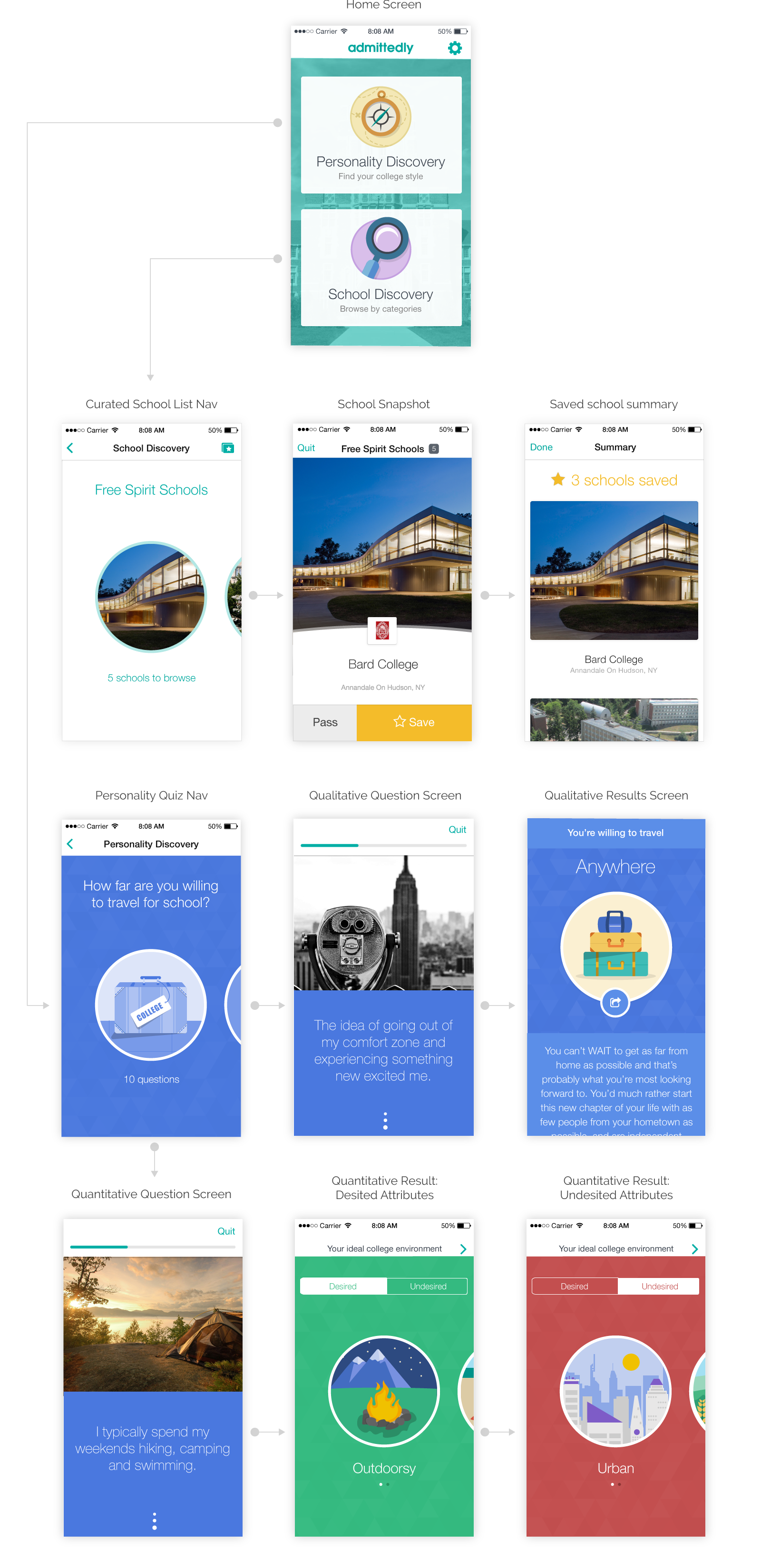
School Discovery Flow and Design
At this point, our biggest problem was how we displayed our school lists and school information. The experience was slow due to too many high resolution images and there was no visual feedback indicating a user saved a school to their "My Schools" list. To correct this, we added animations to the save and pass buttons, allowed the school information to scroll vertically, and introduced a drill-down flow for uncovering information.
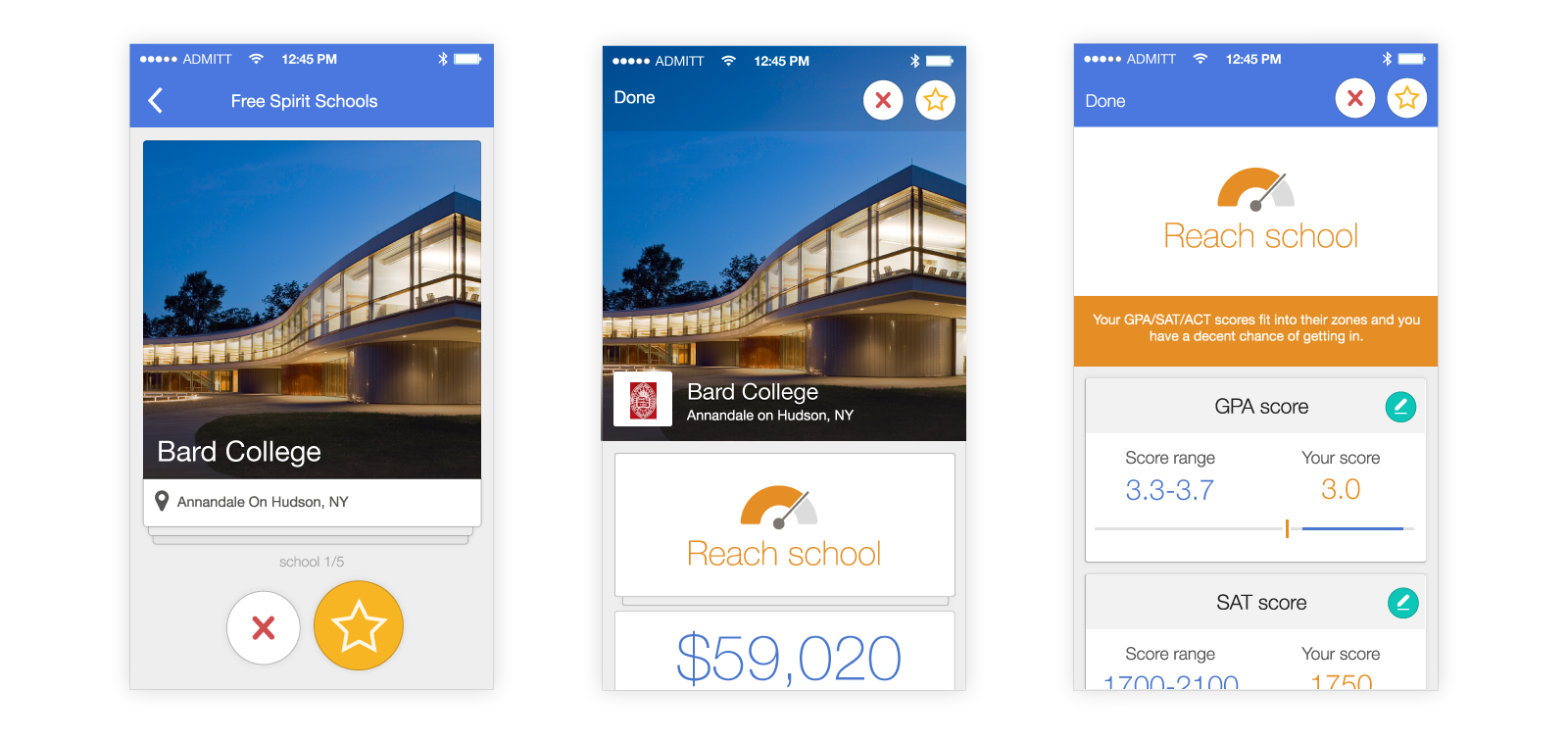
Simplifying Design for a Mobile Experience
When moving from a web app to an iOS app, we faced some problems with our school pages. They were loaded with information and got fairly lengthy - a mobile user's worst nightmare. To make the content app-friendly, We introduced a card UI that allowed users to tap into any data point and learn more about that section. By doing this, we were able to significantly shorten the length of the school pages.
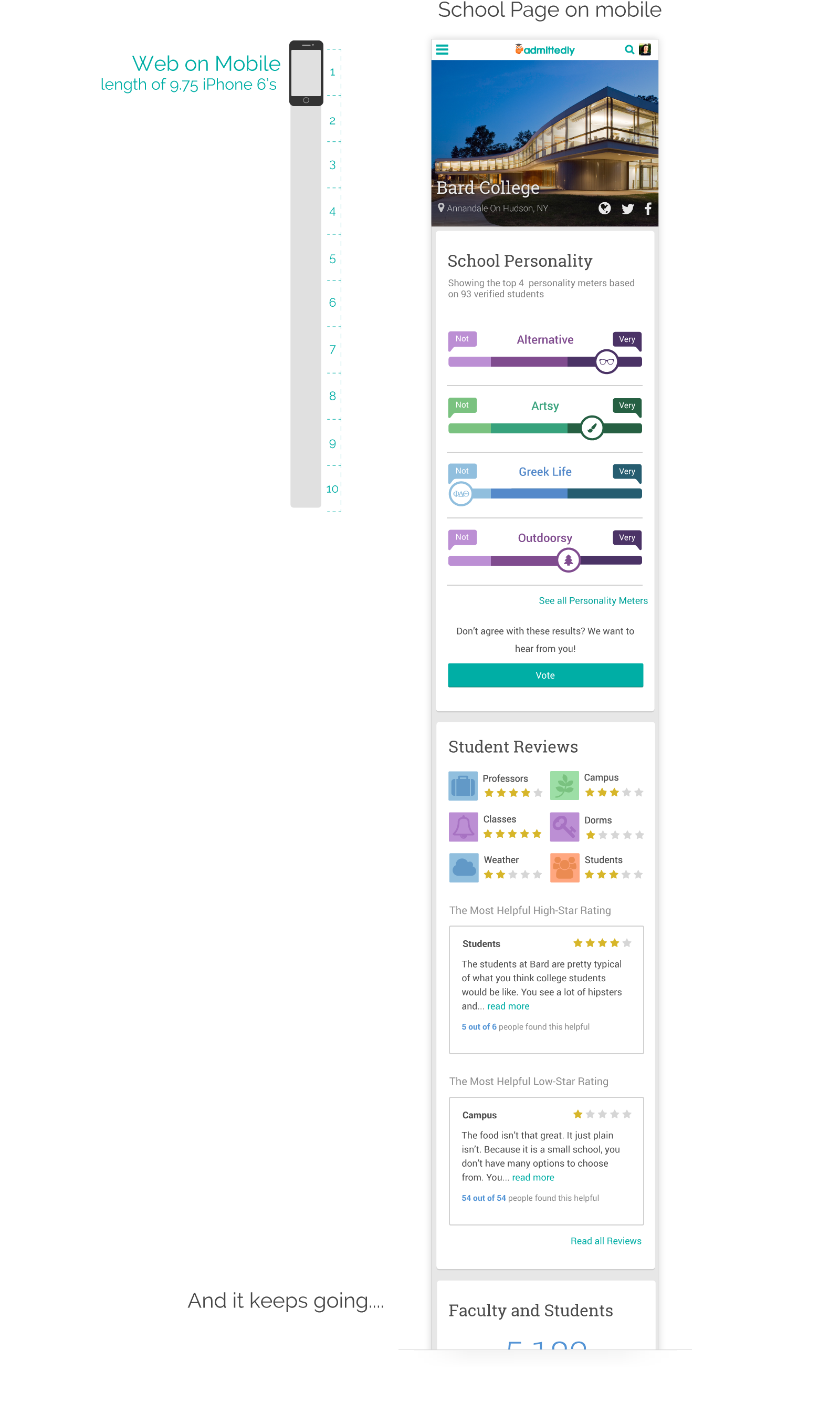
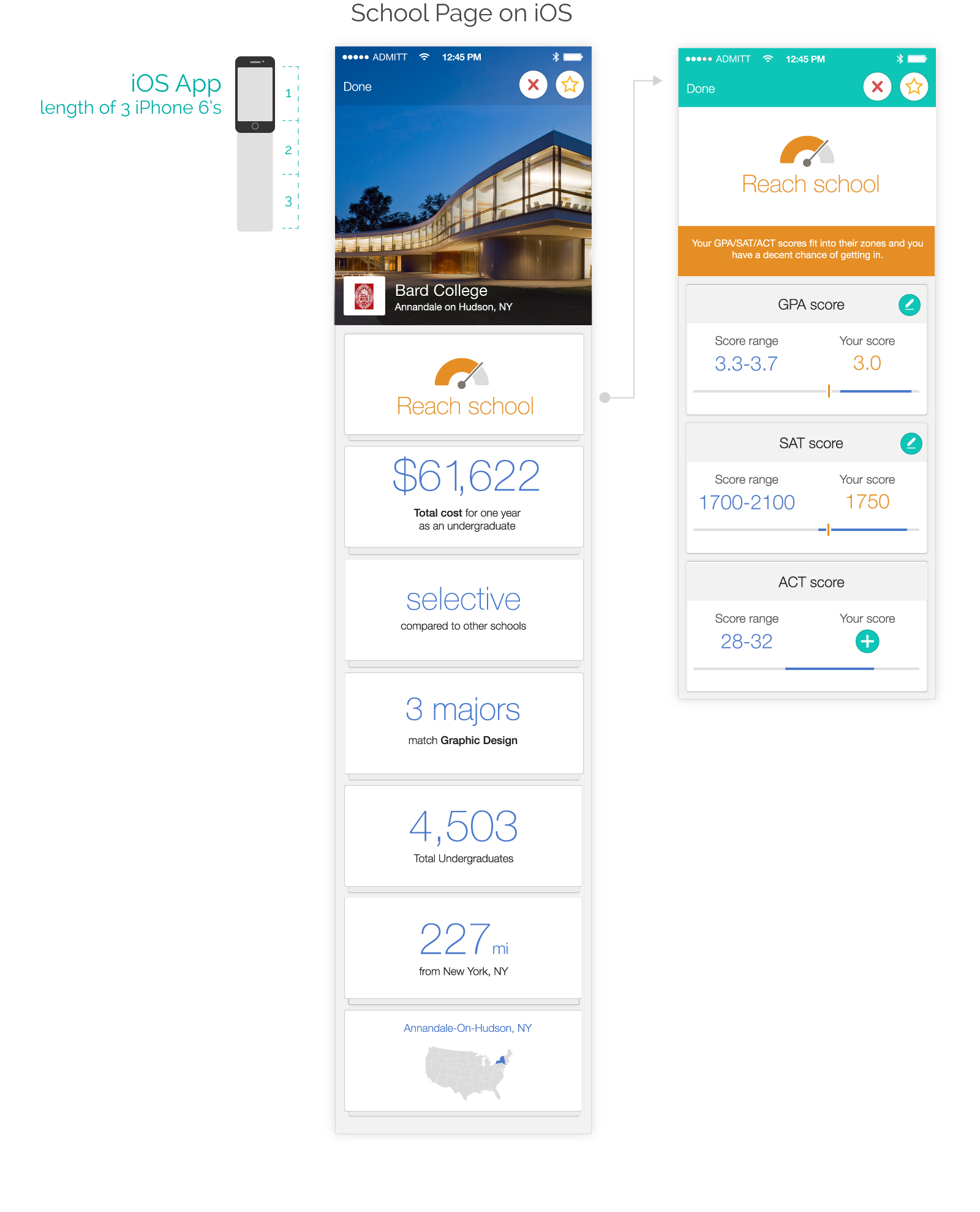
The Results
Moving from Web to iOS Was a Good Decision
Admittedly's target audience (teens from ages 16-18) were using their smart phones more and their laptops less, making the switch from web to iOS an obvious decision.
Switching Admittedly's platform helped increased overall retention rate. The app gave students the flexibility to quickly review and rate schools the moment they heard about an interesting school no matter where they were. The mobility of the app also let them share information with their parents, guidance counselor or whoever was helping them with their applications.